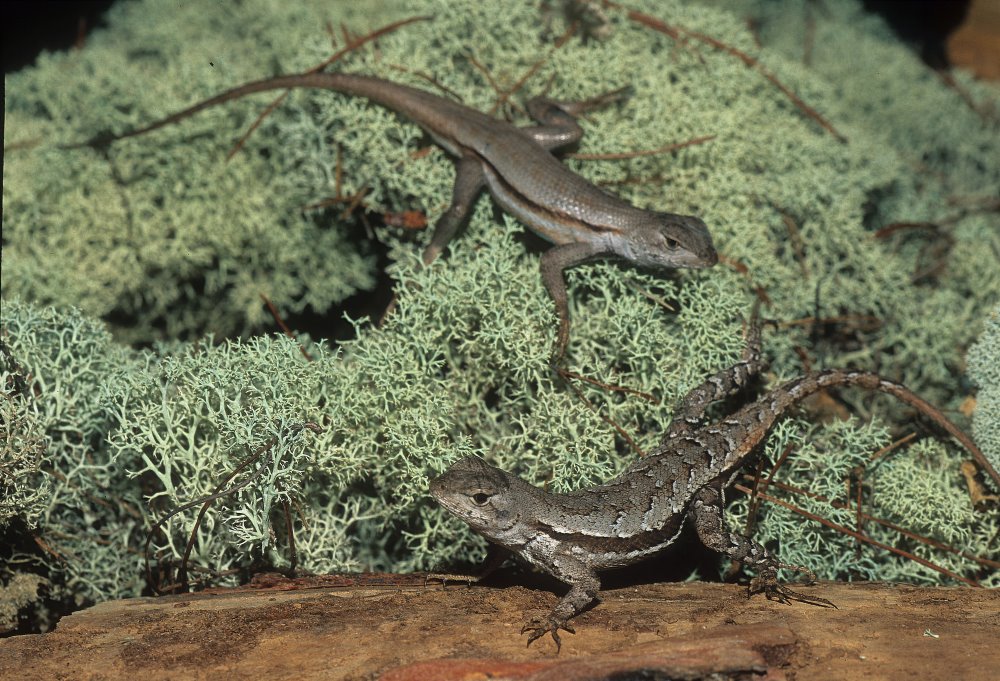
A pair of scrub lizards, female at bottom.
Trash was everywhere. Old carpets. Broken furniture. Vegetative debris. Mattresses. Deteriorating wood. Cut trees. All this and more lay atop the sandy substrate that several lizards, one amphisbaenid, anurans, a few snake species, and one tortoise, the gopher tortoise called home.
We flipped, flipped, then flipped some more. The dunes seemed bereft. Only a small gecko and dead ground skink, and lots of roaches were seen. With the trash come the bugs.
But as I stood contemplating the wondrous success of the cockroaches (did you know there are over 4000 species worldwide?!) I heard a scrambling sound in a small oak next to me. I glanced over just in time to see a small grayish lizard leap from the trunk and land running. Scrub lizard,
Sceloporus woodi. These small cousins of the fence lizard are not always easy to find. They top out at a length of about 5 ½ inches but are often smaller. They occur in 4 disjunct sandy regions of Florida—one such area being on the southeast and the southwest coasts and 2 in the center of the state.
This wary lizard is adept at evading detection, squirreling around a tree trunk or limb at the slightest sign of disturbance. Both sexes bear a prominent lateral stripe on each side, The male has only vague (if any) dorsal markings between the stripes but has an elongate black edged blue patch on each side of the belly and 2 blue spots on the throat. Females lack the ventral blue markings but have irregular stripes across the back.
These interesting insectivores don’t seem as common today as once. If you get a chance to look them up it may be best to do so now.
Male scrub lizards have a pair of blue throat spots and an elongate blue patch on each side of the stomach.

Brown lateral stripes typify both sexes of the scrub lizard.




